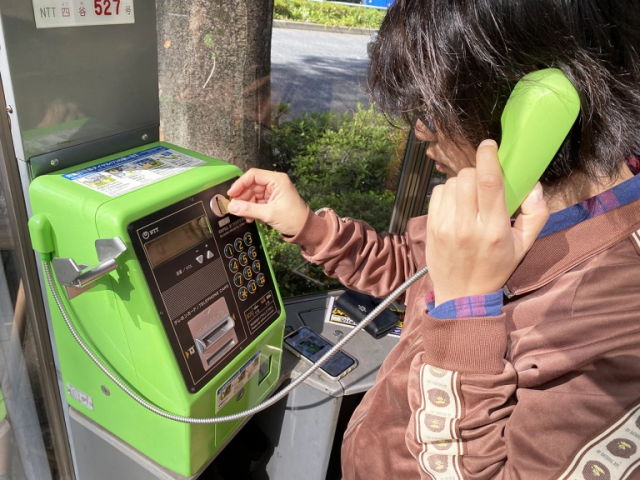
How are you supposed to type a message without a keyboard or touch screen?
Japanese toilets, deservedly, get a lot of credit for all their cool features, like their backside-washing bidets and poop sound-masking “sound princess” audio action. Heck, even the doors on public restrooms in Japan show an advanced design sensibility.
But right now it’s Japanese payphones’ moment in the spotlight, because thanks to some recent online buzz, we just found out something most people had no idea about: you can send email to mobile phones from them, and what’s more, they’ve had this capability for years.
Previously, you could use a payphone to send email to users of phones with service providers Docomo, au, or SoftBank. While the latter two have since dropped this feature, Docomo still supports it, and our Japanese-language reporter Seiji Nakazawa thought a payphone-sent email would be just the sort of surprise to brighten up the morning of his coworker Mr. Sato.
So Seiji dropped a 100-yen (US$0.93) coin into the slot of the payphone he’d be using and got to work.
The procedure to send your email is:
1. After inserting your coin, dial 090-310-1655
2. Dial the phone number of the person you want to send the email to
3. After you hear a voice say “Messeji wo irete kudasai” (“Please input your message”), type your message.
4. When you’re finished, press the pound (#) key twice.
5. Hang up the phone.
But wait, how are you supposed to type the message without a keyboard or touchscreen? The solution to that has actually been around for almost 30 years: You type your message out like people used to when they sent text messages to pagers. In case the 1990s are ancient history to you, here’s a handy chart.
▼ Each character corresponds to a two-digit code, with the first digit on the left and the second at the top. For example, to type S you’d dial 49 (88 is to leave a blank space).
As you can see, you can send messages in both the Latin alphabet or Japanese text. For Japanese text you’re locked in to using phonetic katakana characters, not hiragana or kanji, but that still lets you write intelligible sentences.
Sending the message is essentially free, but you’re instead charged for the time you spend inputting it, at the same rate that you would be for a to-smartphone phone call. Because of that, you’ll want to plan out your message ahead of time, and thanks to a little prep work Seiji was able to complete his message in the amount of time his 100-yen coin had bought him.
And sure enough, shortly after he hung up the phone, Mr. Sato’s phone buzzed to life with a message notification for him, with the sender displayed as “PublicPhone.”
▼ Seiji’s message: “Good morning. -Nakazawa.”
As mentioned above, two of Japan’s three major mobile phone service providers have already dropped their networks’ ability to receive from-payphone emails, but for the time being Docomo is sticking with it, which is good news for all the people in Japan who were still using pagers until the technology was officially discontinued last month.
Photos ©SoraNews24
● Want to hear about SoraNews24’s latest articles as soon as they’re published? Follow us on Facebook and Twitter!
[ Read in Japanese ]

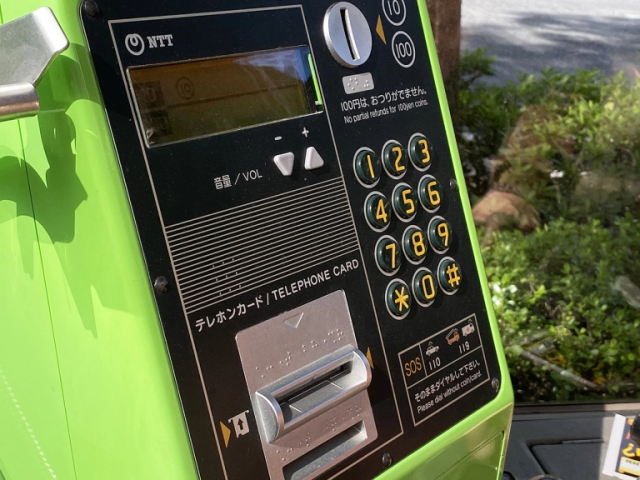
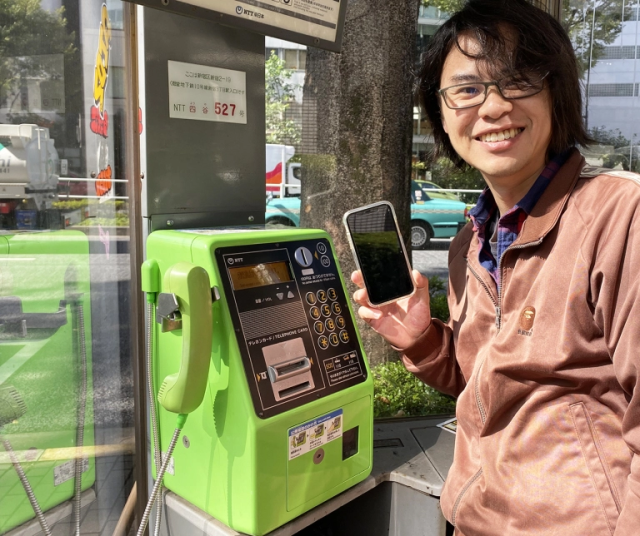
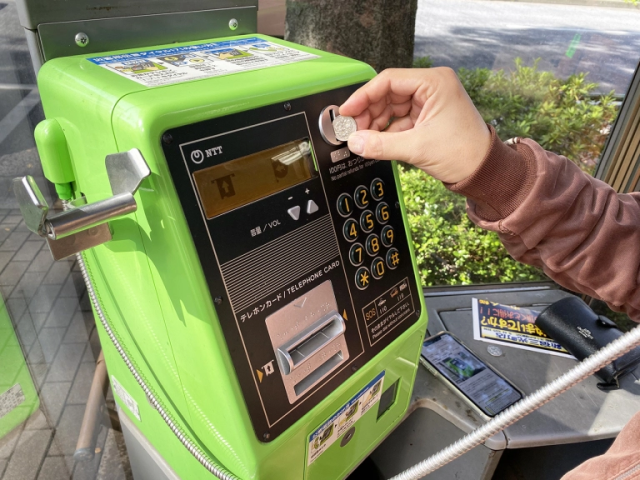
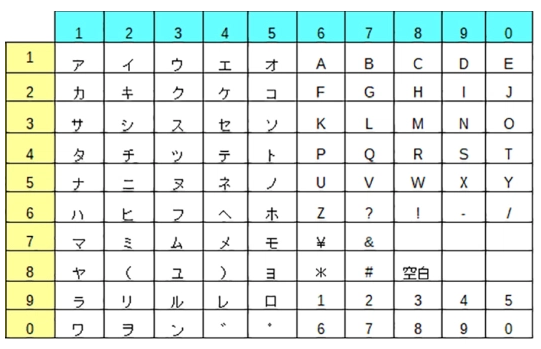

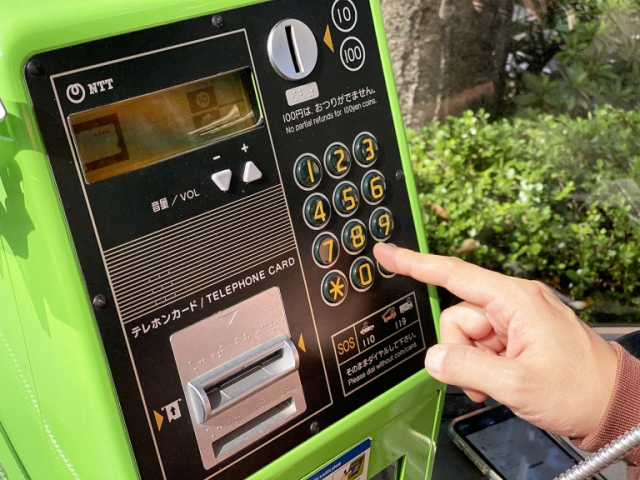
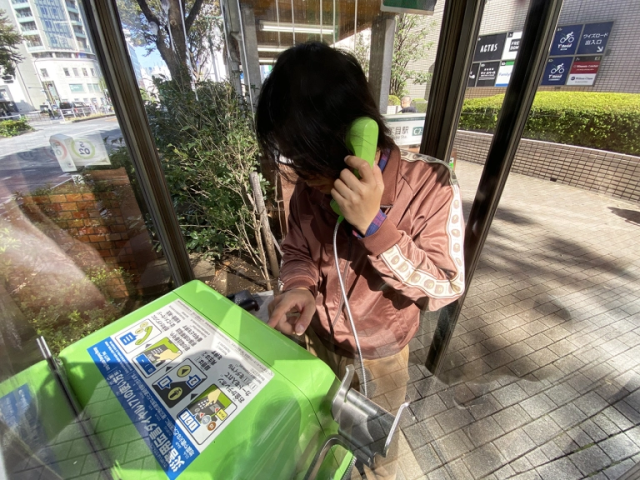
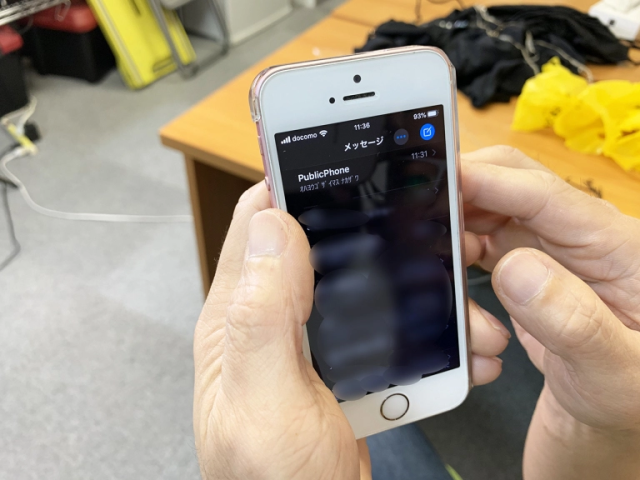
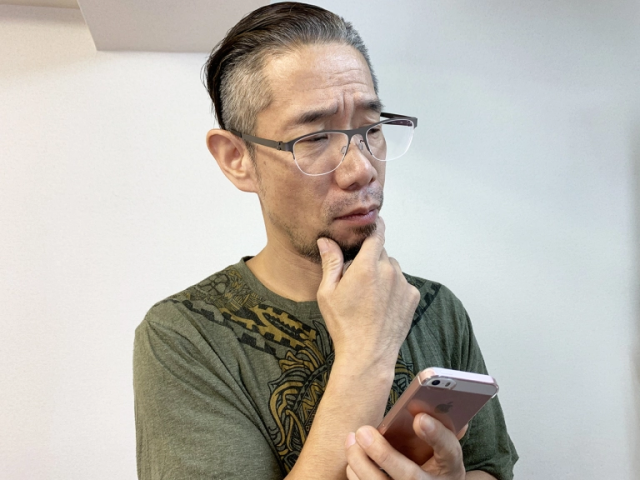
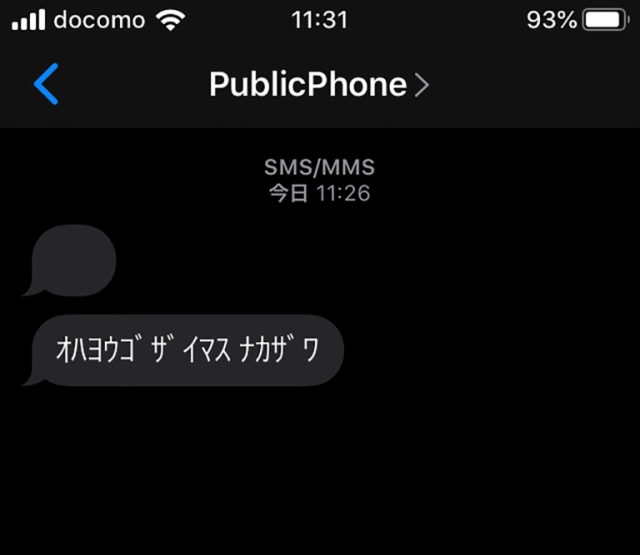
 Japan’s Shinkansen bullet trains to remove all onboard payphones
Japan’s Shinkansen bullet trains to remove all onboard payphones Pager service officially ends in Japan, funeral service for outdated tech held in Akihabara【Pics】
Pager service officially ends in Japan, funeral service for outdated tech held in Akihabara【Pics】 Email spam exhibition held online by Japanese telecom giant
Email spam exhibition held online by Japanese telecom giant New train ad in Japan advocates for leaving texts a while without a response, sparks debate
New train ad in Japan advocates for leaving texts a while without a response, sparks debate Japanese company starts paid service to attach protective film to your smartphone for you
Japanese company starts paid service to attach protective film to your smartphone for you Foreigner’s request for help in Tokyo makes us sad for the state of society
Foreigner’s request for help in Tokyo makes us sad for the state of society Japanese city loses residents’ personal data, which was on paper being transported on a windy day
Japanese city loses residents’ personal data, which was on paper being transported on a windy day Historical figures get manga makeovers from artists of Spy x Family, My Hero Academia and more
Historical figures get manga makeovers from artists of Spy x Family, My Hero Academia and more Ghibli Park now selling “Grilled Frogs” from food cart in Valley of Witches
Ghibli Park now selling “Grilled Frogs” from food cart in Valley of Witches Harajuku Station’s beautiful old wooden building is set to return, with a new complex around it
Harajuku Station’s beautiful old wooden building is set to return, with a new complex around it Red light district sushi restaurant in Tokyo shows us just how wrong we were about it
Red light district sushi restaurant in Tokyo shows us just how wrong we were about it Osaka governor suggests lowering voting age to 0 to curb population decline
Osaka governor suggests lowering voting age to 0 to curb population decline Should you add tartar sauce to Japanese curry rice? CoCo Ichi makes diners an unusual offer
Should you add tartar sauce to Japanese curry rice? CoCo Ichi makes diners an unusual offer Smash Bros. director Sakurai stabs Kirby in the face, has delicious justification for it
Smash Bros. director Sakurai stabs Kirby in the face, has delicious justification for it Akihabara pop-up shop sells goods made by Japanese prison inmates
Akihabara pop-up shop sells goods made by Japanese prison inmates McDonald’s new Happy Meals offer up cute and practical Sanrio lifestyle goods
McDonald’s new Happy Meals offer up cute and practical Sanrio lifestyle goods Japanese ramen restaurants under pressure from new yen banknotes
Japanese ramen restaurants under pressure from new yen banknotes French Fries Bread in Tokyo’s Shibuya becomes a hit on social media
French Fries Bread in Tokyo’s Shibuya becomes a hit on social media Studio Ghibli releases new action figures featuring Nausicaä of the Valley of the Wind characters
Studio Ghibli releases new action figures featuring Nausicaä of the Valley of the Wind characters New private rooms on Tokaido Shinkansen change the way we travel from Tokyo to Kyoto
New private rooms on Tokaido Shinkansen change the way we travel from Tokyo to Kyoto Tokyo Tsukiji fish market site to be redeveloped with 50,000-seat stadium, hotel, shopping center
Tokyo Tsukiji fish market site to be redeveloped with 50,000-seat stadium, hotel, shopping center All-you-can-drink Starbucks and amazing views part of Tokyo’s new 170 meter-high sky lounge
All-you-can-drink Starbucks and amazing views part of Tokyo’s new 170 meter-high sky lounge Beautiful Ghibli sealing wax kits let you create accessories and elegant letter decorations【Pics】
Beautiful Ghibli sealing wax kits let you create accessories and elegant letter decorations【Pics】 Studio Ghibli releases Kiki’s Delivery Service chocolate cake pouches in Japan
Studio Ghibli releases Kiki’s Delivery Service chocolate cake pouches in Japan New definition of “Japanese whiskey” goes into effect to prevent fakes from fooling overseas buyers
New definition of “Japanese whiskey” goes into effect to prevent fakes from fooling overseas buyers Our Japanese reporter visits Costco in the U.S., finds super American and very Japanese things
Our Japanese reporter visits Costco in the U.S., finds super American and very Japanese things Studio Ghibli unveils Mother’s Day gift set that captures the love in My Neighbour Totoro
Studio Ghibli unveils Mother’s Day gift set that captures the love in My Neighbour Totoro More foreign tourists than ever before in history visited Japan last month
More foreign tourists than ever before in history visited Japan last month New Pokémon cakes let you eat your way through Pikachu and all the Eevee evolutions
New Pokémon cakes let you eat your way through Pikachu and all the Eevee evolutions Sales of Japan’s most convenient train ticket/shopping payment cards suspended indefinitely
Sales of Japan’s most convenient train ticket/shopping payment cards suspended indefinitely Sold-out Studio Ghibli desktop humidifiers are back so Totoro can help you through the dry season
Sold-out Studio Ghibli desktop humidifiers are back so Totoro can help you through the dry season Japanese government to make first change to romanization spelling rules since the 1950s
Japanese government to make first change to romanization spelling rules since the 1950s Ghibli founders Toshio Suzuki and Hayao Miyazaki contribute to Japanese whisky Totoro label design
Ghibli founders Toshio Suzuki and Hayao Miyazaki contribute to Japanese whisky Totoro label design Doraemon found buried at sea as scene from 1993 anime becomes real life【Photos】
Doraemon found buried at sea as scene from 1993 anime becomes real life【Photos】 Tokyo’s most famous Starbucks is closed
Tokyo’s most famous Starbucks is closed One Piece characters’ nationalities revealed, but fans have mixed opinions
One Piece characters’ nationalities revealed, but fans have mixed opinions We asked a Uniqlo employee what four things we should buy and their suggestions didn’t disappoint
We asked a Uniqlo employee what four things we should buy and their suggestions didn’t disappoint Princesses, fruits, and blacksmiths: Study reveals the 30 most unusual family names in Japan
Princesses, fruits, and blacksmiths: Study reveals the 30 most unusual family names in Japan Line messaging app adding unsend function to save us from our embarrassing selves
Line messaging app adding unsend function to save us from our embarrassing selves Japanese company invents “Spring Santa” – We love the concept, but it’s actually a little creepy…
Japanese company invents “Spring Santa” – We love the concept, but it’s actually a little creepy… Following powerful earthquake in northern Japan, all Hokkaido payphones are now free to use
Following powerful earthquake in northern Japan, all Hokkaido payphones are now free to use Flipping genius? Japan is getting a new flip phone/smartphone hybrid【Photos】
Flipping genius? Japan is getting a new flip phone/smartphone hybrid【Photos】 “Hey, how’d you get our personal information?” we ask a Japanese telemarketer
“Hey, how’d you get our personal information?” we ask a Japanese telemarketer Yakuza bosses struggling to upgrade phones from 3G
Yakuza bosses struggling to upgrade phones from 3G Japanese company has employees-only capsule toy machine in its office for an awesome reason
Japanese company has employees-only capsule toy machine in its office for an awesome reason Crotchless Hello Kitty panties coming soon…for smartphones?!?
Crotchless Hello Kitty panties coming soon…for smartphones?!? Anti-stalker Male Voice Clip Collection for Women Who Live Alone released by Japanese band【Video】
Anti-stalker Male Voice Clip Collection for Women Who Live Alone released by Japanese band【Video】 Simulation shows the chaotic consequences of walking in Shibuya while staring at your phone
Simulation shows the chaotic consequences of walking in Shibuya while staring at your phone Proposed facial recognition system would send warning emails to families of pachinko addicts
Proposed facial recognition system would send warning emails to families of pachinko addicts Good morning, senpai! Company offering wakeup calls from real Japanese schoolgirls
Good morning, senpai! Company offering wakeup calls from real Japanese schoolgirls Japanese cell phone provider gives same-sex couples with Partnership Certificates family discount
Japanese cell phone provider gives same-sex couples with Partnership Certificates family discount A message from Japanese train station toilet paper: Don’t stare at your smartphone while walking
A message from Japanese train station toilet paper: Don’t stare at your smartphone while walking Food delivery service’s payment processing error allows some people to eat for free…for 3 years
Food delivery service’s payment processing error allows some people to eat for free…for 3 years Thieving made easy! Japanese smartphone service lets you order duplicate keys by taking a photo
Thieving made easy! Japanese smartphone service lets you order duplicate keys by taking a photo
Leave a Reply